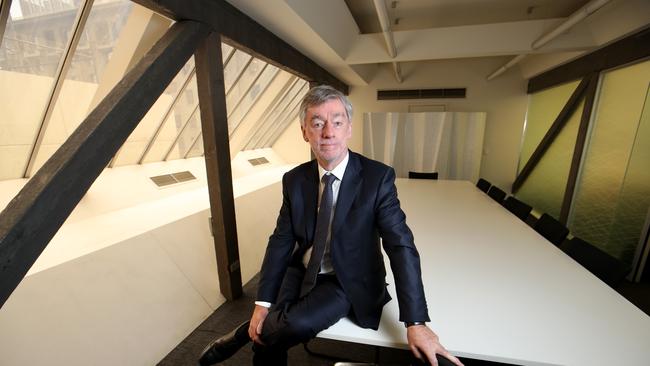
The media and political push for Chairman Lindsay Maxsted and CEO Brian Hartzer is so strong that it may be impossible for one or both to continue. But let’s step back from the hysteria.
As I will explain below the Westpac situation is totally different to CBA, NAB and AMP. Chairman Lindsay Maxsted is one of Australia’s most senior and respected chairman. While he might have known there some legacy issues he had no knowledge of the enormity of the pending charges by the government agency Austrac. Indeed, the Westpac board says that the company “first learnt Austrac had specific concerns in relation to the 12 customers on 15 November 2019 and was not provided with any specific allegations until it received Austrac’s Statement of Claim”.
In other words, Maxsted and his board had no prior warning. That’s why they made the earlier share placement without any mention of the subject.
READ MORE: Kohler – Not nearly good enough, Westpac | BEAR trap for Westpac execs | No grounds to sack Hartzer’
Austrac sees it very differently. In its statement of claim, the regulator alleged that “since at least 2013, Westpac was aware of the heightened child exploitation risks associated with frequent low value payments to the Philippines and South East Asia, both from Austrac guidance and its own risk assessment. In June 2016, senior management was specifically briefed on these risks with respect to the LitePay channel”.
The first question is whether CEO Brian Hartzer did know about the issues and withheld the information from the board. Maxsted and his directors have clearly concluded that their CEO did not know and was just as surprised as they were.
The next and more important question is: “should Hartzer have known”? Did lower-down executives conceal the information to keep their jobs, or were the reporting systems of Westpac not functional. Maxsted is bringing in outside people to advise the board on these and similar matters and that report will be made public.
My advice to Lindsay Maxsted is that if after full investigation you truly believe your CEO has been badly treated by the government agency then go public, and go hard. You may still lose, and it could cost you your job, but you will have done the right thing by Westpac and its top managers. If you have doubts or reservations, then Hartzer must go.
But there is a secondary issue: Westpac’s CEO, chairman and directors needed to be more closely involved in the computer systems of the business, and that’s a lesson for all boards. The rules have changed.
No clear warning
In their public statement Westpac made over the weekend, directors make it very clear that, contrary to Austrac statements, to their knowledge Westpac received no clear warning from the government agency.
Instead back in December 2016, Austrac issued Westpac’s financial crime team with “industry guidance” regarding key indicators for the purchase of child exploitation material involving international funds transfers to the Philippines and South East Asia
Directors concede that Westpac continued with its existing detection monitoring standards and agree that the company failed to update its detection monitoring scenarios to reflect this “industry guidance” until June 2018; that is, 18 months later.
At that time, it introduced a revised transaction monitoring scenario across LitePay payments to the Philippines. In October 2019, Westpac extended the revised transaction scenario to SWIFT channel payments to the Philippines.
So this is the bank’s sin, as Maxsted sees it: “Westpac acknowledges it should have implemented more robust transaction monitoring earlier than it did. This would have generated more suspicious matter reports to Austrac”.
Clearly at this stage Westpac directors do not believe that mistake should cost the CEO his job.
Maxsted’s investigation will need to determine whether Hartzer’s version of the events is correct. I am in no position to make a judgment as to whether Hartzer is right or wrong.
Underinvested on tech
I have already written that Westpac along with the other banks have badly under-invested in technology, covering a wide area of activities. They were encouraged to do that by the big Australian superannuation funds who wanted high dividends. Westpac shareholders, who will in the end decide the fate of Hartzer and Maxsted, were part of the problem.
I am uneasy about government bodies swooping on large companies without warning the CEO or board and laying charges that effectively demand a clean out of top management. In issues like child pornography regulators and companies should work together and drastic action should only be taken when this breaks down.
But that’s an in-principle judgment. I only have Westpac’s version of events and in the past some banks (not Westpac) have been loose with the truth so understandably no one trusts bankers anymore.
But while recognising the hazards of relying on what bankers say, let’s assume Westpac is telling the truth. Then what we have is a government agency looking for a CEO scalp because that’s how you win points from politicians.
Different to CBA
The Westpac situation is totally different from CBA, AMP and NAB .
In the case of CBA, current chairman Catherine Livingstone in October 2016 was a merely director and challenged management in relation to the reports of breaches of anti-money laundering rules.
“I did not receive satisfactory answer to my challenge, because it did not accord with my understanding of Austrac,” she told the Hayne royal commission.
At that same meeting, then chairman David Turner said he wanted to resign.
Ian Narev resigned as CEO in August 2017. Clearly the CBA board was across the issues.
NAB and AMP top managers discovered problems with their life operations and were involved in concealment activities at various management levels. Again, very different to Westpac.




The financial services and banking industry has seen three chairman and chief executives step down in two years and now the chairman and chief executive of Westpac are both under great pressure to go the same way.